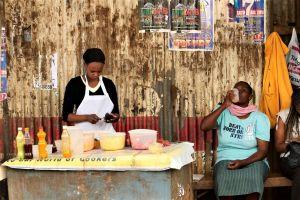Kenya Finds a New Way to Use Blockchain, Launches ‘Local Currencies’
Blockchain-backed “local currencies” have been introduced to some of Kenya’s poor communities as a solution to the lack of hard cash. And, who knows, this may be an incentive for these people to eventually adopt real cryptocurrencies, such as Bitcoin (BTC).

Reuters has reported on this interesting case of testing new models for crypto and blockchain adoption. It comes in the form of new local currencies, combined with a system similar to popular M-Pesa mobile money transfer (launched in 2007 by Vodafone), but on blockchain and with no Kenyan shillings. The system will enable people to earn credit by providing goods and services, as well as spend that credit by transferring it with their mobile phones.
Furthermore, donors to local communities can see how their aid is being used, how and where it helps, so they can adjust it in almost real-time. Also, the system is overall relatively cheap to run, says the article, as some USD 40,000 yearly are needed for servers and support for entire Kenya, after more than USD 1 million in initial startup funding from Norway and other donors.
Kenya’s home to over 49 million people. Its poorest, slum communities are in need of services – and have services to offer – but have no way of paying for them. The article explains that barter, as well as local savings and loan groups, are not particularly efficient as it’s difficult to track what is owned and by whom, while transactions are usually written on paper and kept in a locked box.
The Red Cross societies of Norway, Denmark and Kenya have stepped in and launched this project on Tuesday, in order to improve the use of the USD 1 billion in aid the Red Cross gives yearly, as well as to incentivize economic activity. Though local banks are worried that the interest in their loans will decrease, the project will last for two years, during which the Red Cross hopes to reach 320,000 users. It will expand further in the country, and possibly even launch in Malawi, Myanmar, Zimbabwe, Cameroon and Papua New Guinea. It has already been tested in parts of Kenya and Ethiopia, reportedly showing great promise. Adam Bornstein, who works on alternative financing for the Danish Red Cross, says that the new currency system “boosted economies in poor communities by enabling credits created from work, sales or aid infusions to be traded multiple times and spent locally.”
Paula Gil, a Geneva-based humanitarian consultant, said that “this is the future […] probably the only true use of blockchain for good,” while Will Ruddick, founder of Grassroots Economics, a foundation that develops community currencies, said that “the blockchain-backed exchange systems could reshape how spending for development and resilience-building was directed around the world.”
This is not the first time blockchain has been used in the country. Cryptocurrency platform Bancor and Kenya-based NGO Grassroots Economics partnered in 2018 to use the technology to enable residents to create and distribute their own digital tokens, allowing P2P (peer-to-peer) trading. According to the website of NGO, 7 currencies have already been issued in Kenya. This project too may be another step towards real crypto adoption in Kenya, as the country has seen number of developments so far: reportedly first retailer started accepting crypto as payment, the country welcomed its first Bitcoin ATM and its first blockchain education center, and tech giant IBM continued developing a blockchain technology-powered microloans network there.




